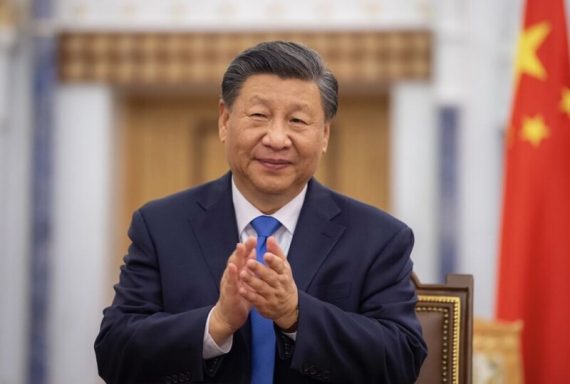T
he Chinese government has announced allocating 7.2% of its annual 2023 budget to the military in order to continue the process of modernization. This translates into 533 billion Chinese yuan or $224 billion. At the same time, China’s military budget is three times smaller than that of the United States. According to the Stockholm International Peace Research Institute, China owns 350 nuclear heads; the U.S. has accused China of planning to increase its nuclear heads to 1,500 by 2035. Beijing has stressed that its nuclear power will not be used except in the case of self-defense and only in case of being attacked with nuclear weapons.
China has been facing increasing challenges such as the formation of AUKUS, the trilateral security pact between Australia, the U.S., and the United Kingdom, which aims to counterbalance China’s growing military presence in the South China Sea. The U.S. has recently signed a deal with the Philippines which allows it to build four more U.S. military bases in the country. The growing ties of the United States with Taiwan, which China views as an integral part of its territory, have also contributed to Beijing feeling threatened by the U.S. and thus increasing its military budget. Unlike the U.S., however, China has only one military base outside its territory in Djibouti, which it says aims to protect ships passing through the Red Sea from piracy.
The People’s Liberation Army (PLA) of China claims that it is a defense army and that it has no plans to attack other countries. China, which has been modernizing its military since the 1980s as a result of its economic growth, maintains its army is being trained to protect the country’s ambitions and to be ready for a possible invasion of Taiwan. In this process, China has reduced the number of its military personnel, focusing more on quality and performance.
The Chinese Army: History and Numbers
Although the U.S. has the largest military budget in the world, China has the largest army. The Chinese military traces its past to the Red Army, which was formed in 1927 when communists revolted against nationalists. In 1933, the size of the Chinese military jumped from 5,000 in 1929 to 200,000. Many of these military forces were killed during infighting with the nationalists while some fought the Japanese alongside nationalists in the north of China.
Following World War II, in 1949, the Red Army, which was renamed the “People’s Liberation Army,” was officially established with the foundation of the Republic of China.
The Chinese constitution states that the military commission of the Chinese Communist Party (CCP) should lead the republic and military. This means that the Chinese military should be under the command of the CCP, and is loyal to the party rather than the republic or the constitution.
In addition to the 2,035,000 soldiers actively recruited by the Chinese military, there are 510,000 reserves. In 2022, the Chinese military budget accounted for 7.1% of the country’s budget.
People’s Liberation Army Ground Forces: The Chinese ground forces are estimated to include approximately 975,000 soldiers. During times of crisis, reserves and paramilitary forces join the army, adding 510,000 more personnel to its capacity.
People’s Liberation Army Naval Forces: The Chinese navy has undergone rapid modernization. Some 300,000 soldiers are organized into three main fleets: the North Sea Fleet, the East Sea Fleet, and the South Sea Fleet. Each fleet consists of several surface ships, submarines, and naval air forces, coastal defense, and naval units. The Chinese navy is considered the largest in the world when it comes to number of naval ships, with a total of 777 different vessels, including, among others, two aircraft carriers and a helicopter carrier, 79 submarines, and 41 destroyers.
People’s Liberation Army Air Force: The number of recruited personnel in the air force of the People’s Liberation Army is 395,000, and they are divided into five commands and 24 divisions with three airborne divisions. The Chinese Air Force is the third largest in the world with 3,285 aircraft, 1,200 of which are warplanes.
Recommended
People’s Liberation Army Rocket Force: The People’s Liberation Army Rocket Force is the main strategic missile force of the People’s Liberation Army with at least 120,000 personnel, divided into six divisions. Its primary mission is to control China’s conventional and nuclear strategic missiles.
People’s Liberation Army Strategic Support Force: Established at the end of 2015 as part of reforms by the People’s Liberation Army, the Strategic Support Force operates with a personnel count of 175,000. A Chinese official has stated said that it is a mix of all current combat units, including but not limited to space, electronic, and intelligence warfare.
China’s growing military power reflects its mounting economic and political weight in world affairs, and the increasing threats surrounding its borders. Although China stresses its army is a defense one, it is not certain that China will not turn offensive in light of growing threats in the South China Sea and Taiwan.
Only time will reveal when and how China will project its military power, especially with Western powers being busy with Russia in Ukraine. This is especially true considering the growing military ties between China and Russia which always leave the U.S. and its allies at unease.





